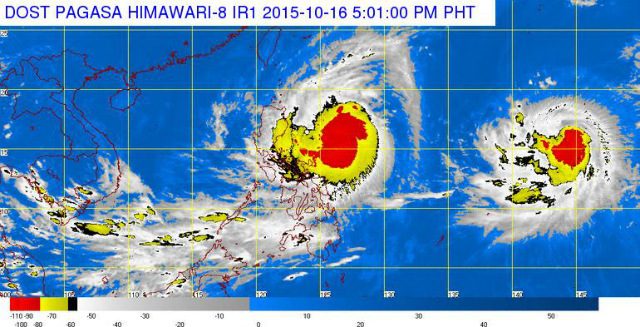SUMMARY
This is AI generated summarization, which may have errors. For context, always refer to the full article.

MANILA, Philippines (UPDATED) – In a nationally televised address, Aquino urged the estimated 6 million people in the direct path of Typhoon Lando (international code name: Typhoon Koppu) to be ready to evacuate, as he stressed the government was making full preparations.
“Your government is here to help us achieve zero casualties,” Aquino said.
The Philippines is struck by about 20 major storms each year, with the disasters regularly killing thousands of people annually and compounding deep poverty for millions.
In November 2013, more than 7,350 people were left dead or missing in the central Philippines as Super Typhoon Yolanda (international codename: Haiyan) – the strongest storm ever recorded on land – destroyed entire towns.
Koppu was expected to make landfall on the northeastern coast of the Philippines’ biggest island of Luzon on Sunday morning, October 18, with wind gusts of up to 180 kilometers (115 miles) an hour, the state weather service said.
The area where it is first expected to hit is a mainly farming and mountainous region, about 270 kilometers northeast of Manila.
The typhoon’s forecast strength was not on a par with Haiyan, which hit land with winds of 315 kilometers an hour.
However, the state weather forecasters and Aquino said a confluence of meteorological conditions, including the El Nino phenomenon and a local high-pressure area, could cause Koppu to be uniquely destructive.
Aquino warned of intense rain over a long period of time.
“This typhoon is different because it will have the effect of being stationary,” Aquino warned, adding forecasters said it could take 12 hours for it to leave the main island of Luzon.
“Because of El Niño, evaporation at sea will be enhanced and cause the typhoon to suck up more water that it will dump on us.”
The state weather service also warned of storm surges of up to 1.2 meters (about four feet) in some coastal areas.
Aquino said heavy equipment, relief goods and rescuers had been pre-positioned in those areas to ensure roads were cleared to get help to them if needed.
“We have assets at the ready… to respond to any eventuality. However, we are dealing with nature so we don’t really know what will happen.”
While storm alerts had been placed over most of Luzon, home to about 50 million people including in the capital of Manila, no evacuations had yet been announced on Friday.
In the Cordilleras, the Regional Disaster Risk Reduction and Management Council conducted as early as Wednesday afternoon its pre-disaster risk assessment meeting. Landslides and flashfloods are expected.
The Mines and Geosciences Bureau (MGB) in the Cordillera, led by Regional Director Faye Apil, asked the local disaster management councils to be vigilant for possible geological hazards, such as landslides, floods, and flashfloods due to heavy rains.
The MGB also enjoined local government units to warn their constituents and take all necessary precautions, especially those on steep slopes and riverbanks. It advised LGUs to refer to the Landslide Susceptibility Maps that were earlier provided to them. – with a report from Jessa Mardy Polonio/Rappler.com
Add a comment
How does this make you feel?
There are no comments yet. Add your comment to start the conversation.